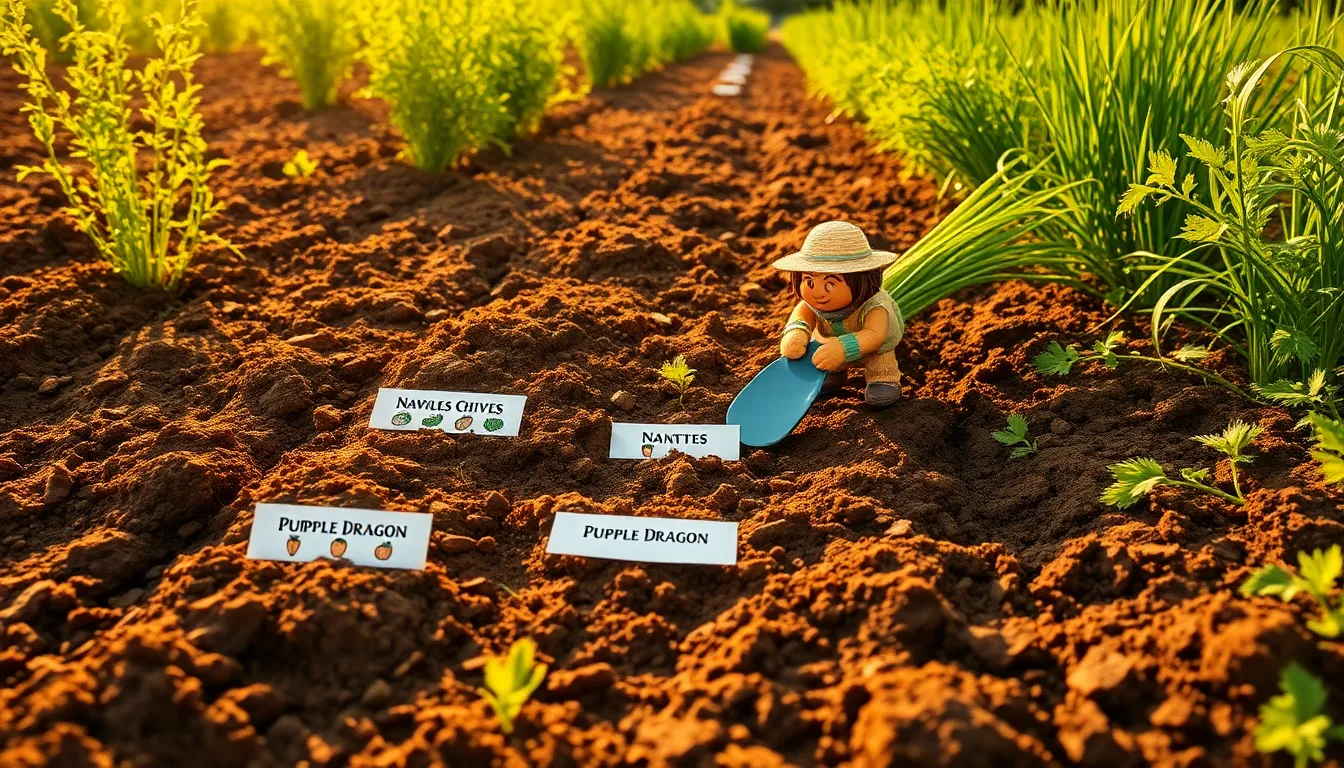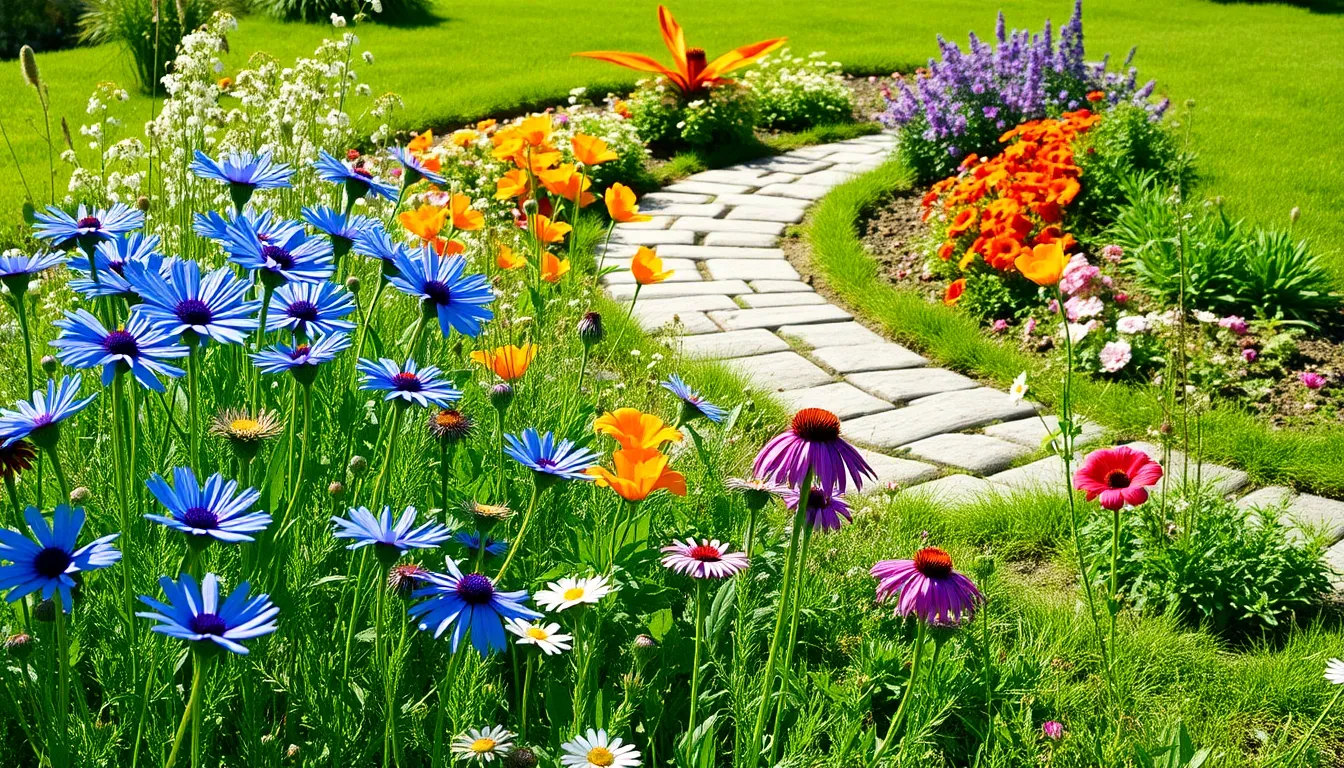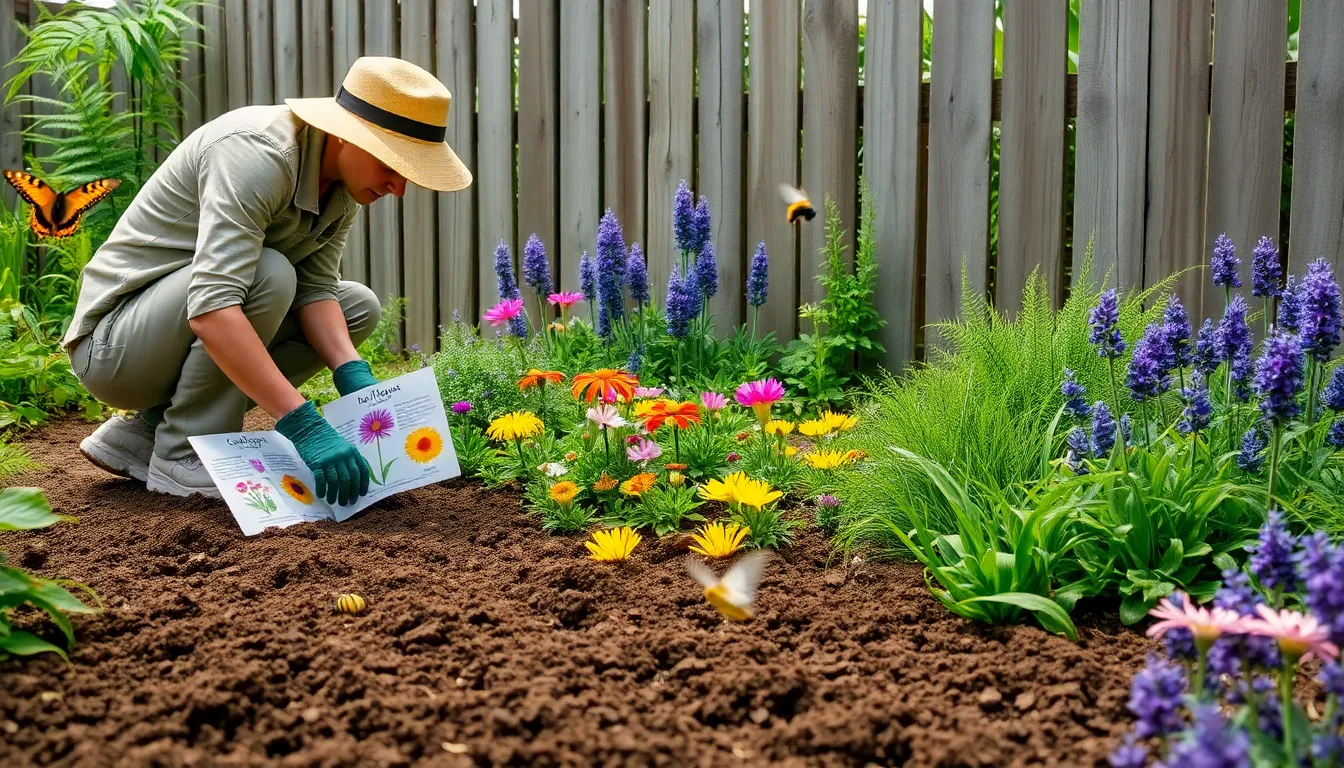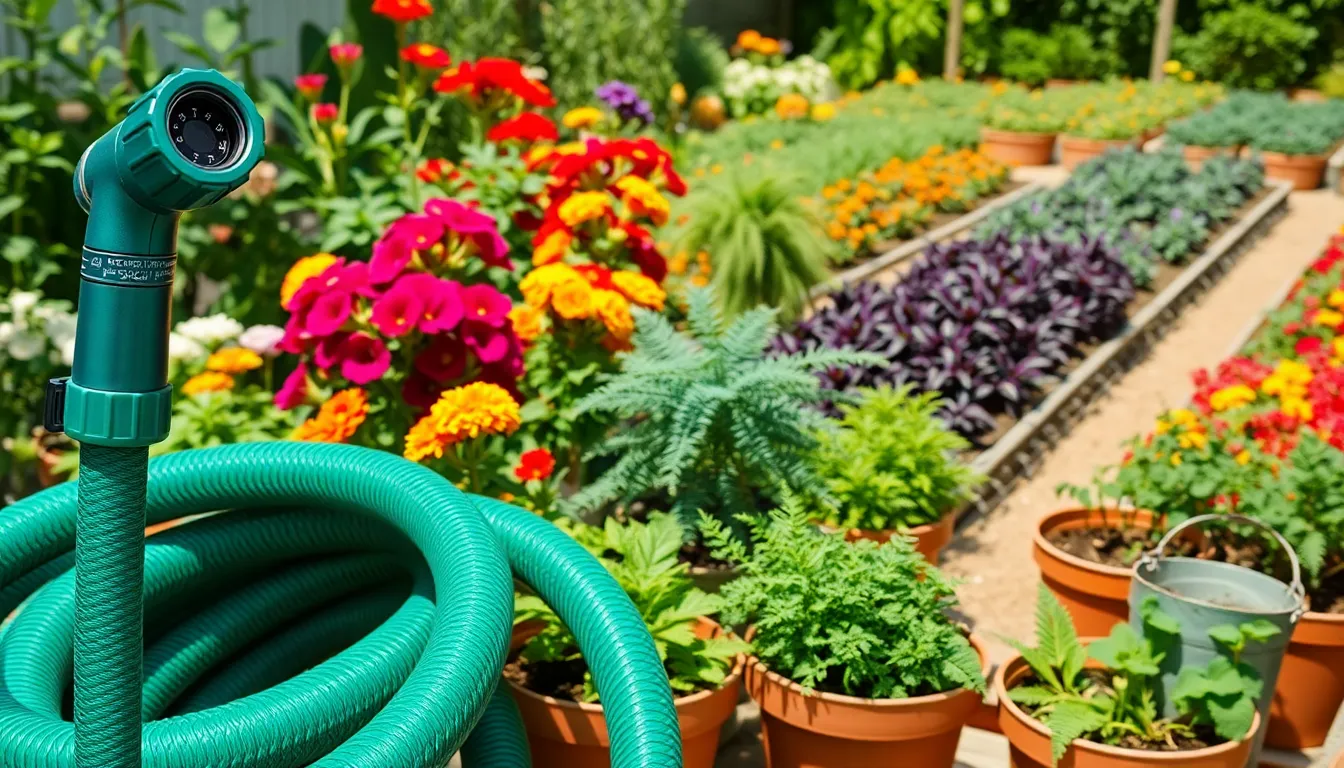Welcome to a world where crunchy delight meets the soil in your backyard! Growing carrots from seed is not just a gardening task; it’s a journey filled with anticipation and reward, ideal for both novices and seasoned green thumbs. Whether you’re planting your very first seed or refining your horticultural prowess, this guide equips you with expert tips to ensure your carrots flourish beyond expectations.
Imagine the satisfaction of pulling vibrant, sweet roots from the earth, knowing they’ve thrived under your care. This collection of cultivation secrets is your golden ticket to achieving a bountiful harvest, offering practical insights that transform your garden into a carrot paradise. With every page, you’ll gain confidence, armed with knowledge that turns your vegetable patch into a source of pride and nourishment.
Choose Loose, Sandy Soil
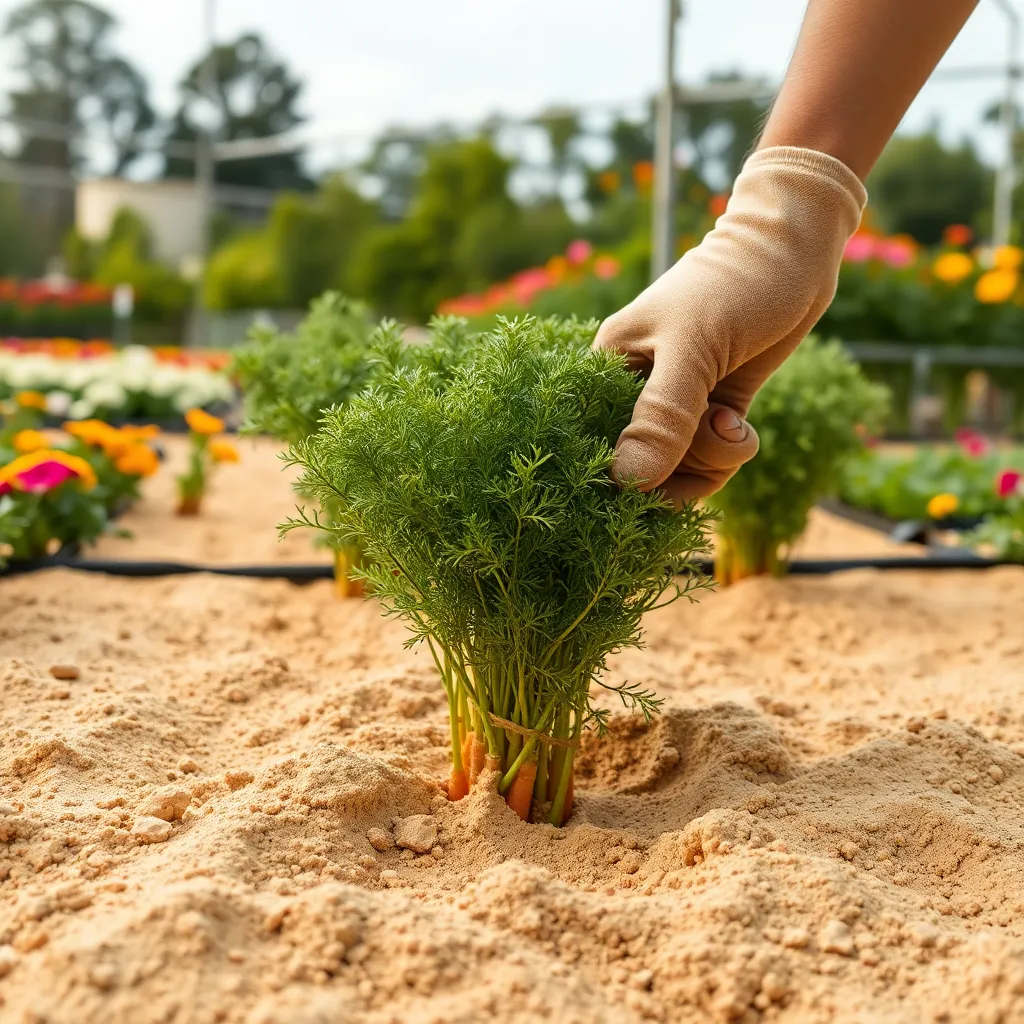
To successfully grow carrots from seed, it’s essential to start with loose, sandy soil. This type of soil allows carrot roots to expand easily, preventing deformities and promoting healthy growth.
For beginners, a good soil mix can be made by combining equal parts of sand, compost, and garden soil. This mixture provides the necessary drainage and nutrient balance that carrots thrive on, ensuring a bountiful harvest.
Advanced gardeners might consider testing their soil’s pH level, aiming for a range between 6.0 and 6.8. If your soil is too acidic or alkaline, amendments like lime or sulfur can help achieve the optimal conditions for carrot growth.
Ensure that the planting area is free from rocks and clumps, as these obstructions can hinder root development. Regularly turning the soil with a garden fork can help maintain its loose texture, which is crucial for carrot seeds to sprout and grow effectively.
Sow Seeds Directly in Rows
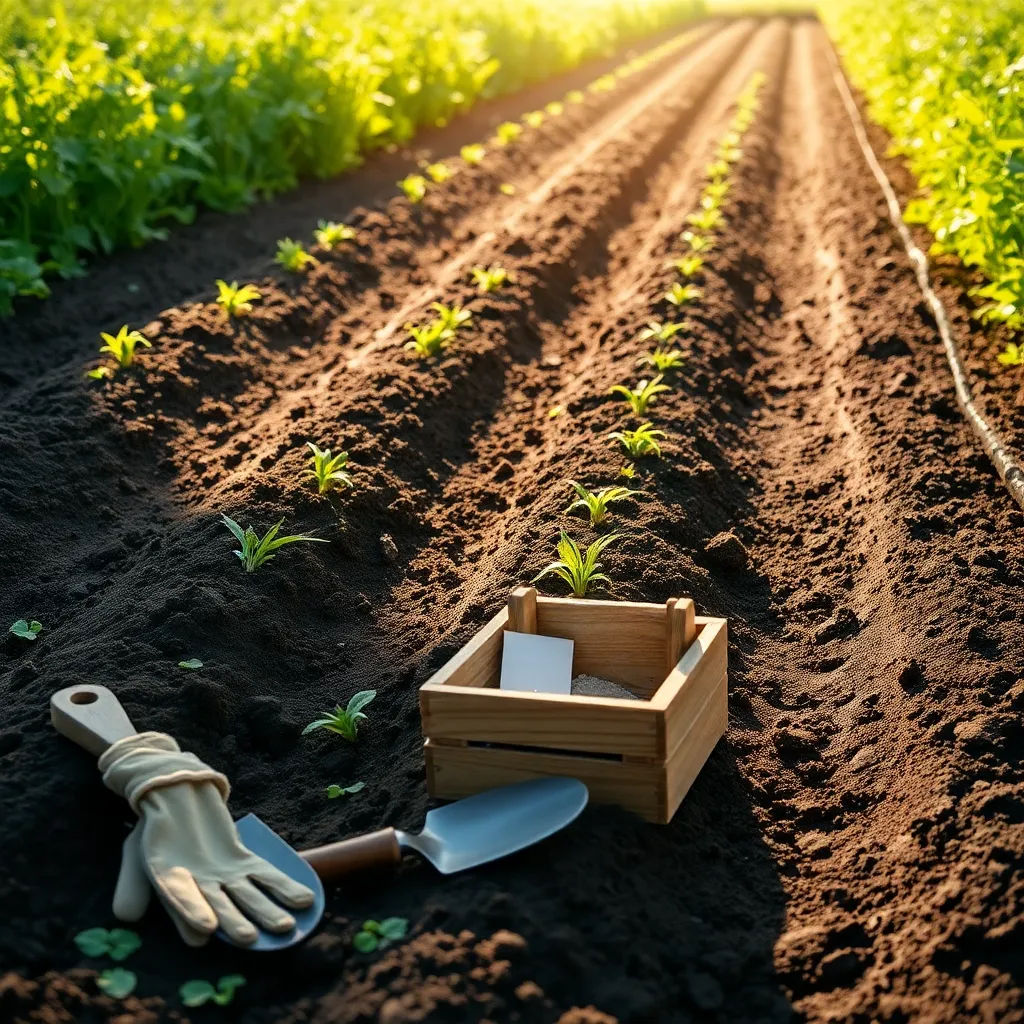
To sow carrot seeds directly in rows, start by marking out straight lines in your prepared soil bed. Use a stick or a piece of string to ensure your rows are evenly spaced, ideally about 12-18 inches apart, to allow for proper air circulation and growth.
Before sowing, lightly water the rows to create a moist environment that encourages germination. Carrot seeds are tiny, so sprinkle them thinly and evenly along the rows, aiming for a seed spacing of about half an inch.
Cover the seeds with a thin layer of soil, no more than a quarter-inch deep, as carrots require light to germinate. Gently pat the soil down to ensure good contact between the seeds and the soil, which helps retain moisture and speeds up germination.
Water the rows carefully to avoid washing away the seeds, using a gentle spray setting on your hose or a watering can with a fine rose. Keep the soil consistently moist during the germination period, which typically takes 14-21 days, but be careful not to overwater as this can lead to rot.
Thin Seedlings for Strong Growth
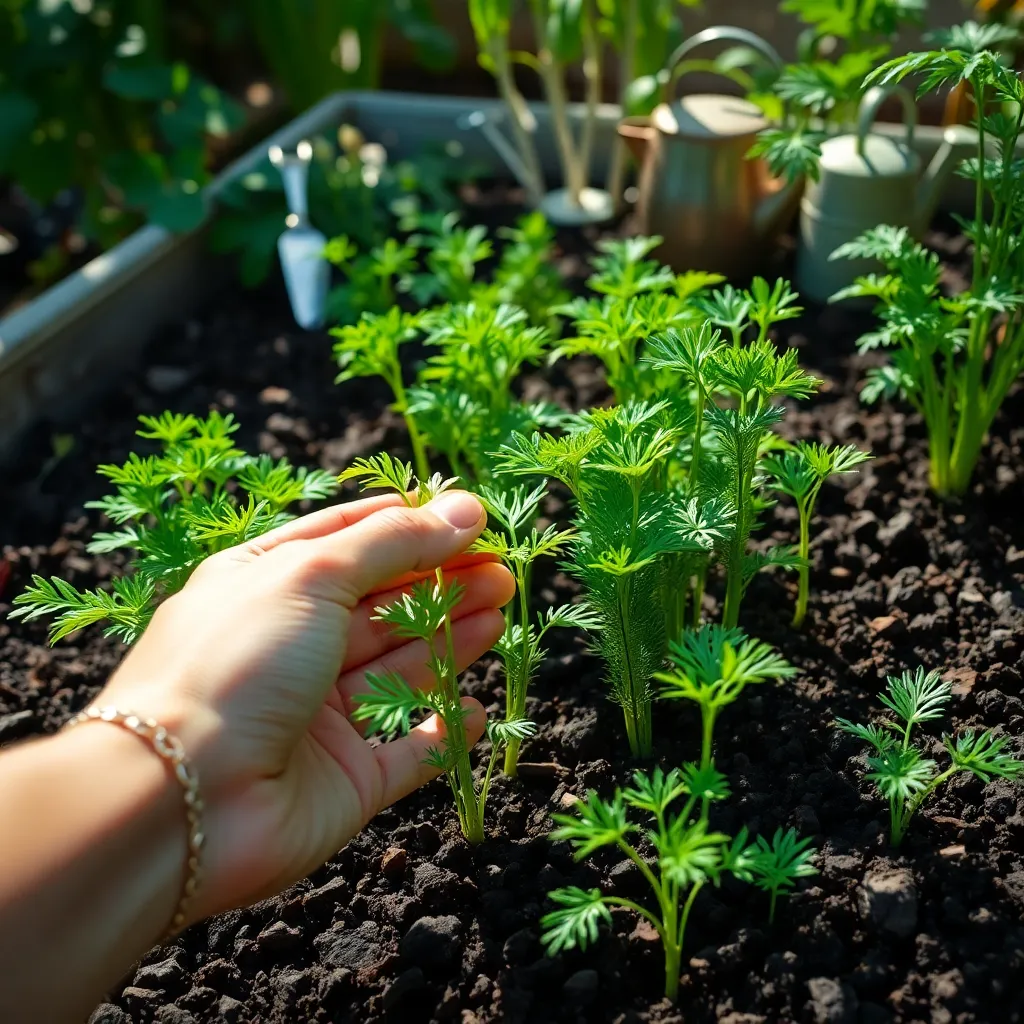
As your carrot seedlings begin to grow, it’s essential to thin them out to ensure robust development. Crowded seedlings compete for nutrients, light, and water, which can stunt their growth.
To start thinning, wait until the seedlings are about two inches tall, typically around three weeks after planting. At this stage, they are strong enough to handle being moved, yet still young enough to recover quickly from the disruption.
Use a pair of small scissors to snip off the weaker seedlings at soil level, leaving the strongest ones with about an inch of space between them. This method minimizes root disturbance, which is critical for the remaining seedlings to continue growing healthily.
For those looking to optimize growth, consider leaving about two inches between seedlings after the first thinning. This extra space allows for more air circulation and reduces the risk of disease, promoting a stronger crop.
Water Consistently, Avoid Overwatering
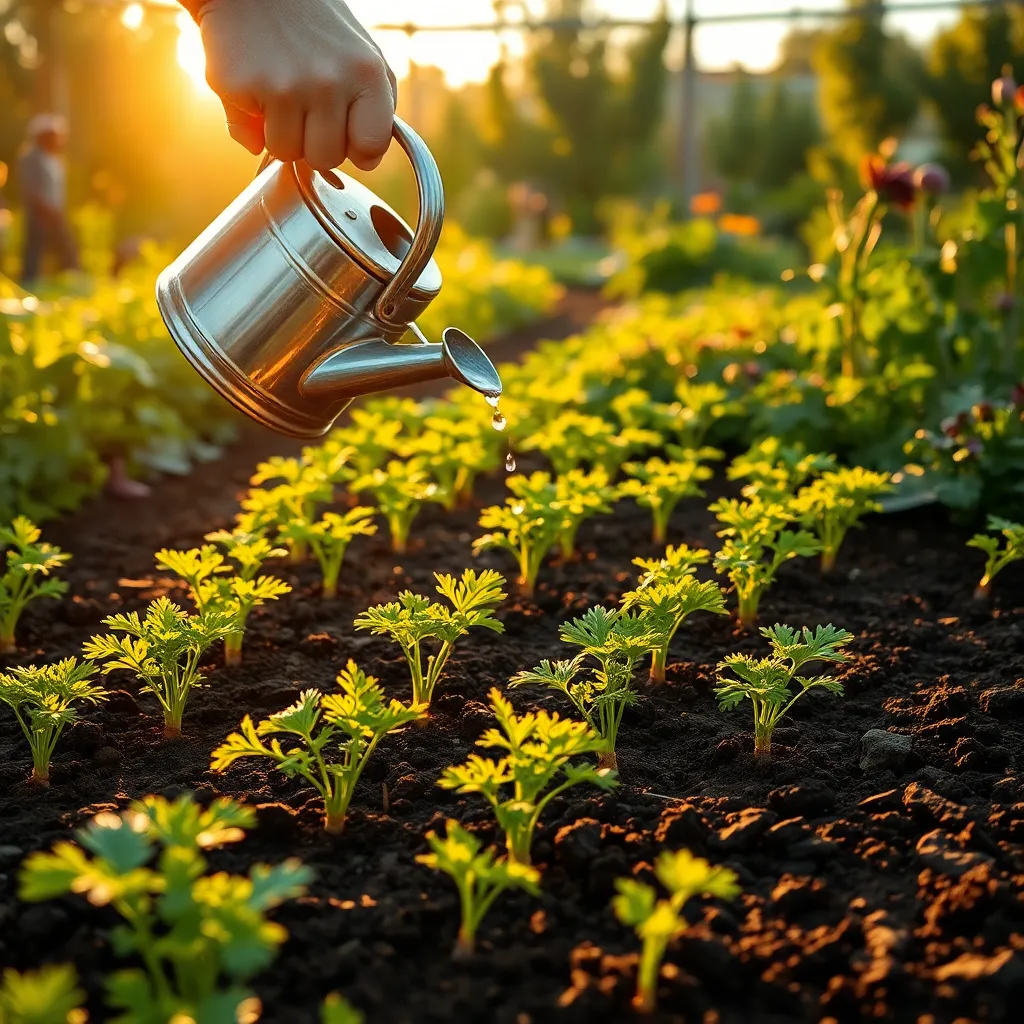
Consistent watering is crucial for successful carrot growth, ensuring the soil remains moist but not soggy. Start by checking the top inch of soil; if it feels dry, it’s time to water.
Carrot seeds need consistent moisture for germination, which can take 10 to 21 days. Use a gentle spray or soaker hose to avoid displacing seeds and ensure even coverage.
Avoid overwatering, as it can lead to root rot and poor carrot development. Ensure your carrots are planted in well-draining soil; sandy or loamy soil is ideal for preventing waterlogged conditions.
If you’re unsure about your watering schedule, consider a soil moisture meter for more precise monitoring. This tool helps you maintain the right balance, allowing carrots to thrive while preventing water-related issues.
Mulch to Retain Soil Moisture
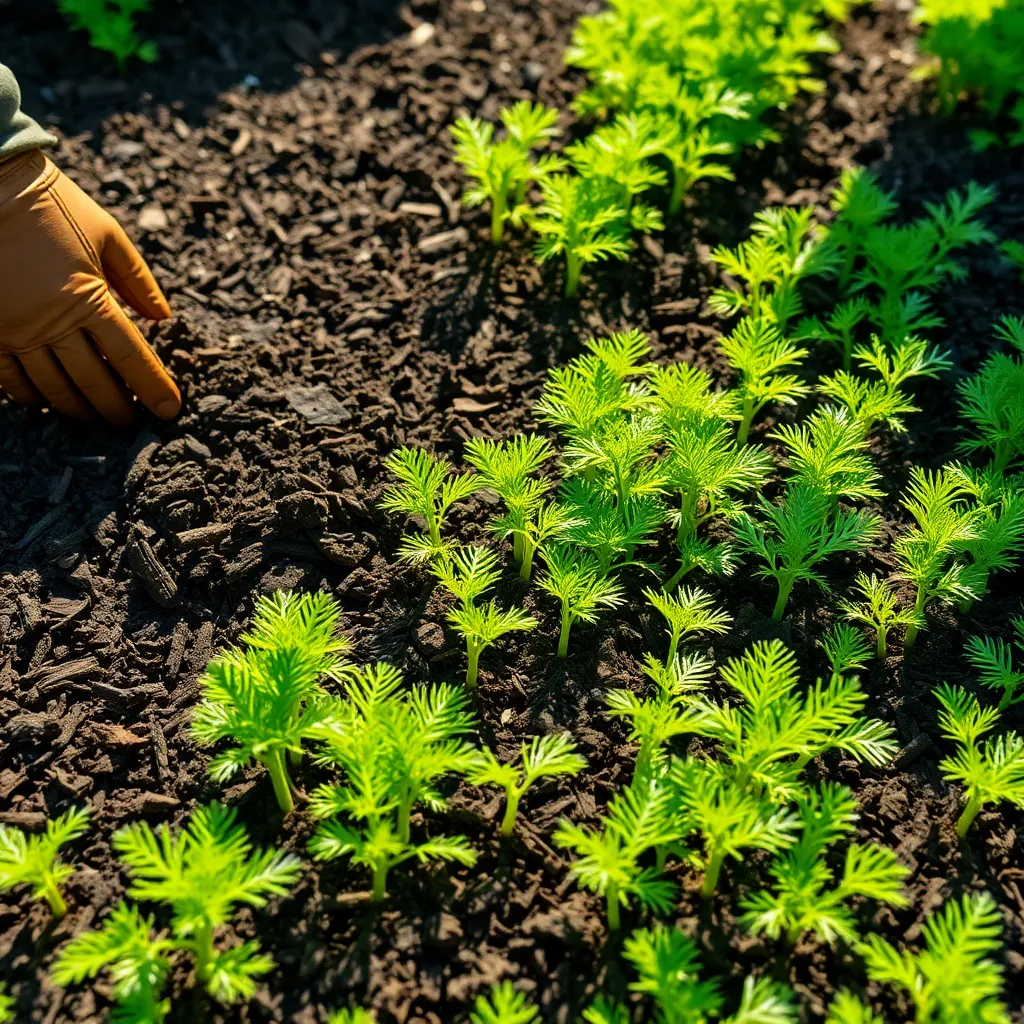
To keep your carrot plants healthy and thriving, consider using mulch to retain soil moisture. Mulch helps to regulate soil temperature, which is especially beneficial during hot summer months when evaporation rates are high.
Applying a layer of organic mulch, such as straw or shredded leaves, can significantly reduce water loss from the soil. This practice not only conserves water but also suppresses weed growth, making it easier for your carrots to access nutrients.
Begin by spreading a 2 to 3-inch layer of mulch around your carrot seedlings, taking care not to cover the young plants themselves. Mulch provides the added benefit of breaking down over time, enriching the soil with nutrients that support healthy root development.
For gardeners seeking advanced techniques, consider using a combination of different mulch types to achieve optimal results. A base layer of cardboard or newspaper can create a barrier that further prevents moisture loss, while a top layer of organic mulch adds aesthetic appeal and additional insulation.
Conclusion: Growing Success with These Plants
In nurturing your relationship, just like growing carrots from seed, it’s essential to cultivate the right environment for growth. First, establish a strong foundation by preparing the soil – or in relational terms, create a space where open communication thrives. Second, remember the importance of planting seeds with intention, ensuring you and your partner share common goals and values. Third, be patient and give each other time, much like allowing seeds to sprout at their own pace. Fourth, nurture your relationship consistently, akin to watering and providing nutrients to your plants. Finally, embrace adaptability, as relationships, like gardens, flourish through change and attention.
To embark on this journey today, choose one area of your relationship that could use some extra care, and commit to nurturing it. Whether it’s dedicating time for heartfelt conversations or planning a future goal together, take that step now.
Bookmark this article so you can revisit these essential tips whenever you need guidance. As you invest in your relationship’s growth, remember that consistent care and attention lead to a thriving partnership. Here’s to a flourishing future filled with mutual respect, love, and understanding.

